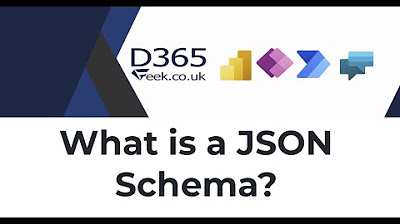What Is GraphQL? REST vs. GraphQL
Summary
TLDRGraphQL is a flexible query language for APIs developed by Meta, allowing clients to request specific data through a schema and supporting mutations and subscriptions. Unlike REST, which uses URLs for resources, GraphQL operates with a schema and can handle complex queries in a single request, avoiding N+1 problems. However, it requires more tooling and can be challenging to cache. It also poses risks if not properly secured, as clients can request extensive data. The video discusses the trade-offs of using GraphQL in high-scale production environments.
Takeaways
- 📘 GraphQL is a query language for APIs developed by Meta, allowing clients to request exactly what they need from the data schema.
- 🔌 GraphQL acts as an intermediary between clients and backend services, capable of aggregating multiple resource requests into a single query.
- 🛠️ It supports mutations for data modifications and subscriptions for clients to receive data modification notifications.
- 🤝 Both GraphQL and REST use HTTP for requests and responses, but GraphQL allows more flexibility in specifying resources and fields.
- 🔑 GraphQL eliminates the need for URLs to specify API resources, instead using a schema that can handle complex queries involving relationships.
- 📚 REST APIs are simpler to consume without special libraries, whereas GraphQL requires heavier tooling support on both client and server sides.
- 🚫 One of GraphQL's drawbacks is its complexity in caching compared to REST, which leverages HTTP GET's well-defined caching behavior.
- 💡 Configuring GraphQL to leverage HTTP caching is possible but requires careful consideration and additional work.
- ⚠️ GraphQL's flexibility can be a double-edged sword, as it allows clients to potentially make heavy database queries that could impact performance.
- 💡 The decision to use GraphQL should be based on a careful evaluation of trade-offs, considering the complexity and upfront investment required.
- 📚 For those interested in system design, the video suggests exploring additional resources such as books and newsletters on the topic.
Q & A
What is GraphQL?
-GraphQL is a query language for APIs developed by Meta. It allows clients to request exactly what they need from the API by providing a schema of the data.
What is the main purpose of GraphQL's schema?
-The schema in GraphQL defines the structure of the data and the operations the client can perform, giving clients the power to specify exactly what data they need.
How does GraphQL sit in the architecture between clients and backend services?
-GraphQL acts as a middleware layer that sits between clients and backend services, allowing it to aggregate multiple resource requests into a single query.
What are the three main operations supported by GraphQL?
-GraphQL supports three main operations: queries to fetch data, mutations to apply data modifications, and subscriptions to receive notifications on data changes.
How does GraphQL differ from REST in terms of resource fetching?
-GraphQL allows clients to specify the exact resources and fields they want, whereas REST typically has predefined endpoints that return specific data, often including additional related resources.
What is the common HTTP method used by GraphQL for queries?
-GraphQL uses HTTP POST by default for queries, which is different from REST, where HTTP GET is commonly used for fetching resources.
Why might caching be more difficult with GraphQL compared to REST?
-Caching is more challenging with GraphQL because it uses a single point of entry and POST requests by default, which do not leverage the standard HTTP caching mechanisms that GET requests do.
What are some of the upfront costs associated with implementing GraphQL?
-Implementing GraphQL requires heavier tooling support on both the client and server sides, which involves a sizable upfront investment in terms of time and resources.
What is the N+1 query problem, and how does GraphQL address it?
-The N+1 query problem occurs when a client needs to make multiple requests to fetch related data. GraphQL addresses this by allowing clients to send a complex query that fetches additional data according to relationships defined in the schema, reducing the number of requests needed.
What is a potential risk associated with GraphQL's ability to let clients query for just the data they need?
-A potential risk is that clients might inadvertently cause performance issues or even bring down a database if they make overly broad or inefficient queries, especially in a mobile application scenario.
When might it not be worth implementing GraphQL for an API?
-It might not be worth implementing GraphQL if the API is very simple and only requires basic CRUD operations, as the upfront cost and complexity of GraphQL may not justify the benefits in such cases.
Outlines

Esta sección está disponible solo para usuarios con suscripción. Por favor, mejora tu plan para acceder a esta parte.
Mejorar ahoraMindmap

Esta sección está disponible solo para usuarios con suscripción. Por favor, mejora tu plan para acceder a esta parte.
Mejorar ahoraKeywords

Esta sección está disponible solo para usuarios con suscripción. Por favor, mejora tu plan para acceder a esta parte.
Mejorar ahoraHighlights

Esta sección está disponible solo para usuarios con suscripción. Por favor, mejora tu plan para acceder a esta parte.
Mejorar ahoraTranscripts

Esta sección está disponible solo para usuarios con suscripción. Por favor, mejora tu plan para acceder a esta parte.
Mejorar ahora5.0 / 5 (0 votes)






